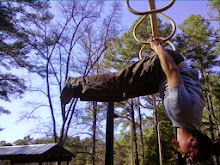Physical Inactivity- A Growing Crisis
This is my first blog. What I’ll try to do is share thoughts that might be useful in furthering my goal of getting people more active, thus healthier and happier. I want to start with the big picture as I see it. Most Americans are very inactive, and the rest of the world is trying to catch up with us. Based on accelerometer monitoring in the NHANES study, fewer than 10% of teenagers and 5% of adults meet physical activity guidelines. The real number is probably higher because accelerometers miss some activities, but I’m sure it is closer to the truth than surveys. If 95% of adults smoked, we would consider it a health crisis, but that’s about where we are with physical inactivity. We should consider it a crisis.
The epidemics of obesity and type 2 diabetes in adults and children are indications that low activity levels, along with disastrous eating habits, are the biggest health challenges of our time. I suggest you check out www.3four50.org. The basic idea is that 3 behaviors—smoking, inactivity, poor diet—are the main causes of four diseases—heart disease, cancers, lung disease, diabetes—that account for 50% of deaths worldwide. Physical inactivity is one of the big three, so we need to be serious about improving the situation.
I want to end on a positive note. With support from the Centers for Disease Control and Prevention, as well as several health organizations, a National Plan for Physical Activity is being developed. Having a plan does not ensure we will be successful, but not having a plan is a good way to guarantee continued failure. There are opportunities to have input into the development of The Plan, and it is essential that every person who believes physical activity is essential for health is directly involved in the implementation of plan. As a first step, visit www.physicalactivityplan.org.
I hope Dr. Sallis doesn't mind that I link his writings and information here, as I have with others of like-minded opinions on the LACK of physical activity in this country.
Being a trainer, education is part of my resume. Educating someone on how to properly lift an object, throw an object, and push an object, is a passion of mine. To fight off any other future health problems, we must start NOW to help reverse what we've done. We have done a poor job of this, and we must get better, for the future is not all roses...
.jpg)





